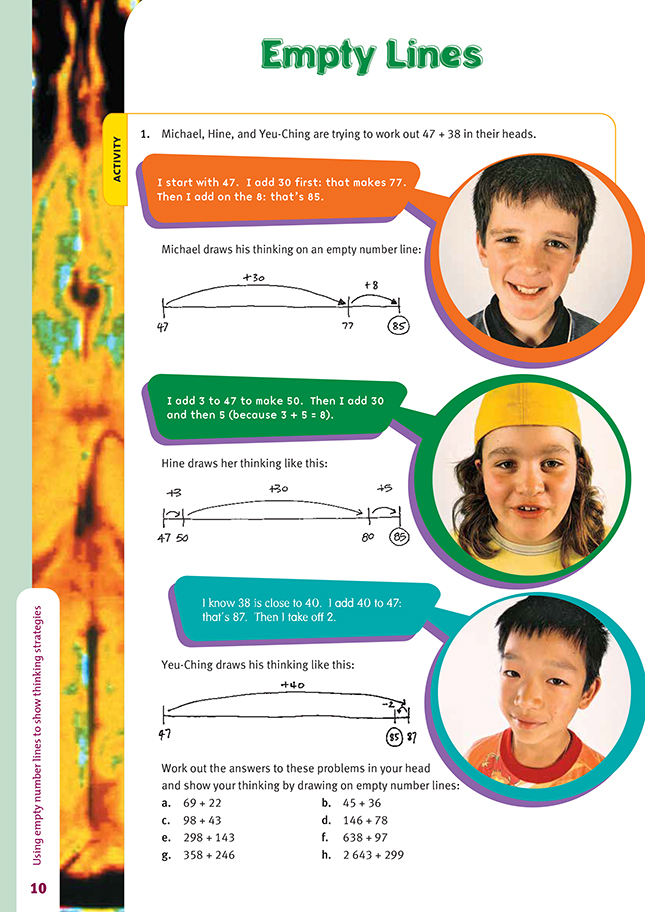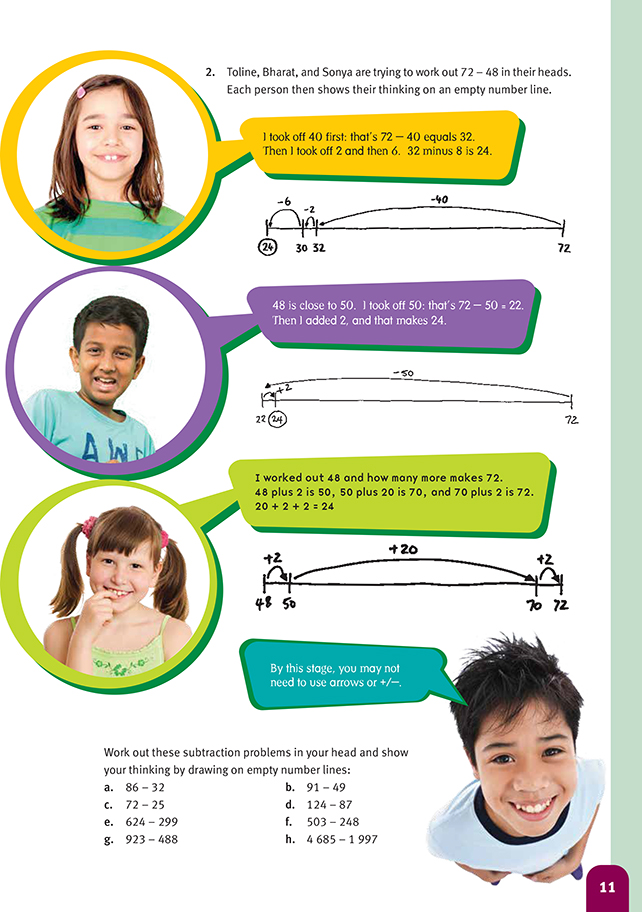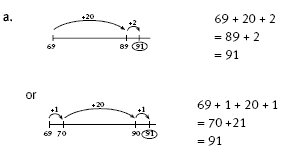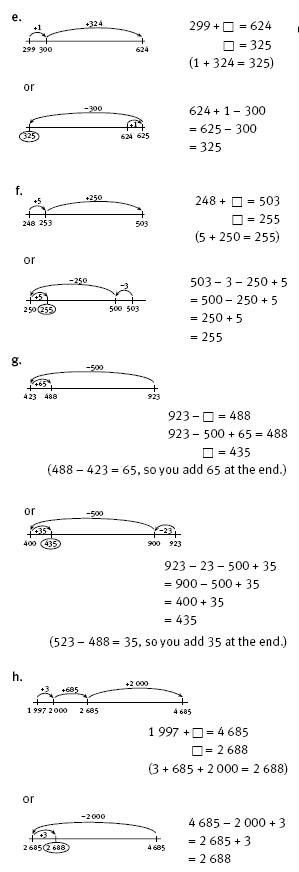This is a level 3 number link activity from the Figure It Out series. It relates to Stage 6 of the Number Framework.]
A PDF of the student activity is included.
Click on the image to enlarge it. Click again to close. Download PDF (275 KB)
solve addition and subtraction problems using a number line
FIO, Link, Number, Book Two, Empty Lines, pages 10-11
The important part of this activity is for students to develop thinking strategies and recording methods that are as flexible as the thinking used. Whether or not the addition and subtraction problems are difficult is not important. The key phrase in this activity is “draws his/her thinking”.
The empty line differs from the conventional number line in that the spacing between numbers does not have to use steps of equal size. The empty line is not used to measure or count but to show the relationship between the numbers when an operation is performed. The operation may have a number of steps. Each step is shown as a number with its operation sign, with an arrowed line showing the direction as on any number line.
The students will need to see how each of the six characters have called on their own knowledge in deciding which strategy to use. For example, Michael is using his knowledge of the place value of 38 as 3 tens and 8 ones to choose to add 30 first and then 8. This “front-on” method is perfectly logical and appropriate. Hine sees that she can round 47 up to 50 by adding 3, leaving 30 and 5 to be added. Her knowledge of addition facts that make 10 is the basis for choosing this method.
Have the students look for number relationships in the question that might help them to choose a good strategy. In question 1b (45 + 36), they may see that 45 can be rounded up to 50 by adding 5, and therefore they can use a compensation strategy of adding 5 to one addend and subtracting 5 from the other. On the other hand, they may recognise that both addends are part of the nine times table, so 5 nines are added to 4 nines, and this must be 9 nines, and so the answer is 81.
The students who do not have a good knowledge of subtraction basic facts may not be able to find relationships in question 2 that can be turned into operational strategies. You may need to revise these subtraction basic facts before starting the problems. Include some extended facts as well. Facts such as 100 – 50 = 50 and
600 – 300 = 300 can be related to 10 – 5 = 5 and 6 – 3 = 3. Some students may not be aware of connections like these.
Encourage your students to solve the problems in the way that is easiest for them. Show the students that you value each strategy equally and that the aim is for them to seek the most efficient strategy that they can use, not merely to memorise a strategy that they have been shown.
Answers to Activity
The arrows and the +/– signs are not essential.
Use them if you find them helpful.
1. Some possible strategies are:
.gif)




